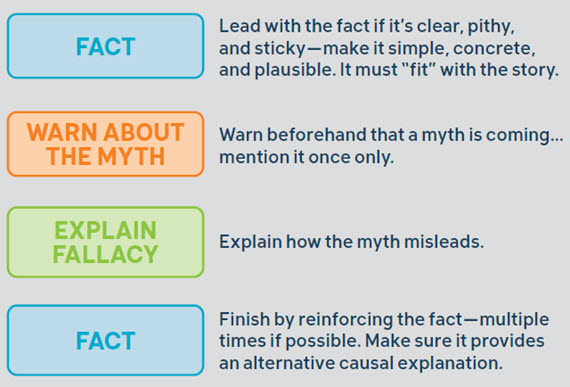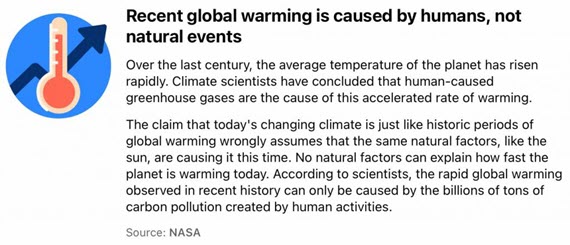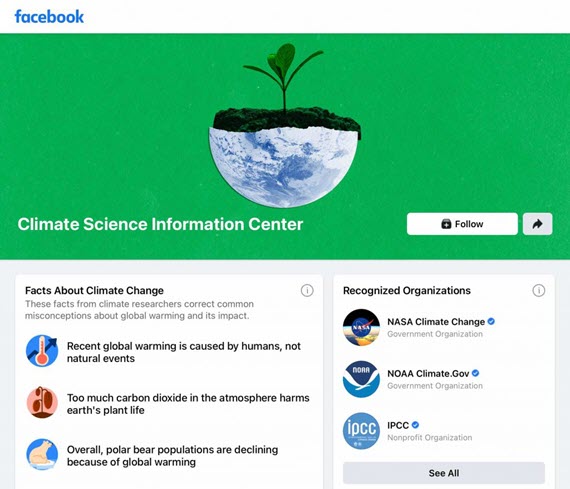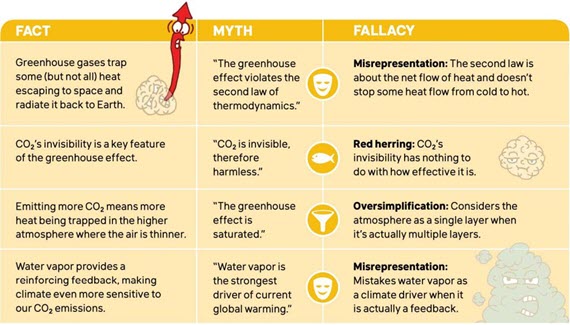Teaming up with Facebook to fight misinformation
Posted on 26 February 2021 by John Cook
Some of you may remember our blog post "A conundrum: our continued presence on Facebook" in which we detailed our misgivings about and decision to stick with Facebook for the time being. So these latest developments - reposted from the Cranky Uncle homepage - might come as a bit of a surprise!
Over the past few months, I’ve been working with Facebook, in collaboration with Sander van der Linden (Cambridge University) and Tony Leiserowitz (Yale University), to debunk climate misinformation. This new project, titled “Facts About Climate Change“, launched on Facebook’s Climate Science Information Center last week.
In the Debunking Handbook 2020, we (myself and 21 other leading misinformation researchers) lay out the recommended structure for an effective debunking: Fact-Myth-Fallacy-Fact. A debunking should contain a factual replacement that fills the gap left in people’s mental model when a myth is explained to be false (that’s a lot to take in, I have a video that fleshes this dynamic out further). Before you mention the myth (and you do need to mention the myth when debunking it), warn people that you’re about to introduce a myth to them so they’re cognitively on guard and less likely to be influenced by the myth. To help people resolve the conflict between fact and myth, you need to explain the logical fallacy or rhetorical technique that the myth uses to distort the facts (I touched on this in an interview with Axios last week). And lastly, it’s good practice to end your debunking by reaffirming the facts. Fight sticky myths with stickier facts!

If you look carefully, you’ll notice each Facebook debunking sticks to this format. It leads with the key fact that debunks the myth. It then mentions the myth in a way that cues the reader that the myth is wrong. It explains the fallacy of the myth (more on this shortly). Finally, the debunking reaffirms the key fact.

An interesting aspect of the Facebook’s debunkings is the fallacy explanations are what I would call a “soft fallacy explanation.” In the Denial101x Massive Open Online Course and Cranky Uncle vs. Climate Change book, the fallacy explanations are “hard fallacy explanations”, where the specific fallacy is explicitly named (with cute icons to make them stickier). Going through an iterative collaborative process with Facebook led to a softer approach and I’m intrigued by the different approach – examining whether hard or soft fallacy explanations are more effective is an empirical question that I hope to explore experimentally!
Last important point: “Facts about Climate Change” is just a first small step towards adequately addressing climate misinformation. Posting fact-checks is just one of the things we (scientists) been talking to Facebook about & we’re looking forward to continuing to collaborate & develop more solutions…































 Arguments
Arguments

































"Drink responsibly!"
— Joe Camel
[Maybe I have that a little bit mixed up. :-) ]
Useful. Nothing gets you reading better than 'you're going to be surprised by this'. Link shared with our climate action network.